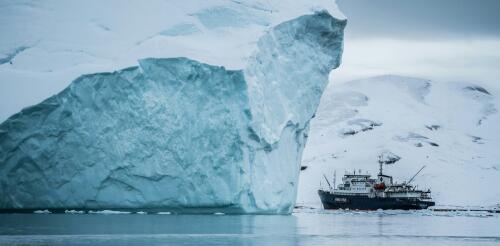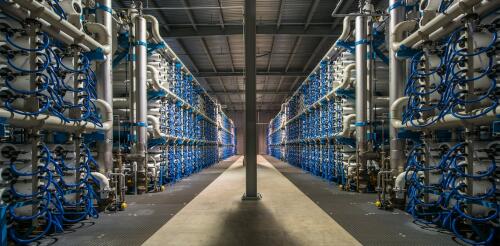Salinity
When people think about the risks of climate change, the idea of abrupt changes is pretty scary. Movies like “The Day After Tomorrow” feed that fear, with visions of unimaginable storms and populations fleeing to escape rapidly changing temperatures. While Hollywood clearly takes liberties with the speed and magnitude of disasters, several recent studies have raised real-world alarms that a crucial ocean current that circulates heat to northern countries might shut down this century, with potentially disastrous consequences. That scenario has happened in the past, most recently more than 16,000 years ago. However, it relies on Greenland shedding a lot of ice into the ocean. Our new research, published in the journal Science, suggests that while Greenland is indeed losing huge and worrisome volumes of ice right now, that might not continue for long enough to shut down the current on its own. A closer look at evidence from the past shows why. Blood and water The Atl...
Arizona is one of the fastest-growing states in the U.S., with an economy that offers many opportunities for workers and businesses. But it faces a daunting challenge: a water crisis that could seriously constrain its economic growth and vitality. A recent report that projected a roughly 4% shortfall in groundwater supplies in the Phoenix area over the next 100 years prompted the state to curtail new approval of groundwater-dependent residential development in some of the region’s fast-growing suburbs. Moreover, negotiations continue over dwindling supplies from the Colorado River, which historically supplied more than a third of the state’s water. The Colorado River’s watershed extends across seven U.S. states and into Mexico. Use of river water is governed by a compact negotiated in 1922. Center for Colorado River Studies, CC BY-ND As a partial solution, the Arizona Water Infras...
The Salton Sea spreads across a remote valley in California’s lower Colorado Desert, 40 miles (65 kilometers) from the Mexican border. For birds migrating along the Pacific coast, it’s an avian Grand Central Station. In midwinter tens of thousands of snow geese, ducks, pelicans, gulls and other species forage on and around the lake. Hundreds of other species nest there year-round or use it as a rest stop during spring and fall migration. At the dawn of the 20th century, this massive oasis didn’t even exist. It was created in 1905 when Colorado River floodwaters breached an irrigation canal under construction in Southern California and flowed into a basin that had flooded in the past. In earlier years, the sea covered roughly 40 square miles more than its current size of 343 square miles (890 square kilometers). Since then, agricultural runoff from newly formed nearby irrigation districts has sustained it. By midcentury, the sea was considered a regional amenity...
Coastal urban centers around the world are urgently looking for new, sustainable water sources as their local supplies become less reliable. In the U.S., the issue is especially pressing in California, which is coping with a record-setting, multidecadal drought. California Gov. Gavin Newsom recently released a US$8 billion plan for coping with a shrinking water supply. Along with water conservation, storage and recycling, it includes desalination of more seawater. Ocean desalination, which turns salt water into fresh, clean water, has an intuitive appeal as a water supply strategy for coastal cities. The raw supply of salt water is virtually unlimited and reliable. Ocean desalination is already a major water source in Israel and the United Arab Emirates. Cities in the Middle East, Australia, Mediterranean Europe, the U.S. Southwest and Australia also rely on it. There are more than 20 ocean desalination plants operating in California, plus a few in Florida. Many more plants acr...



